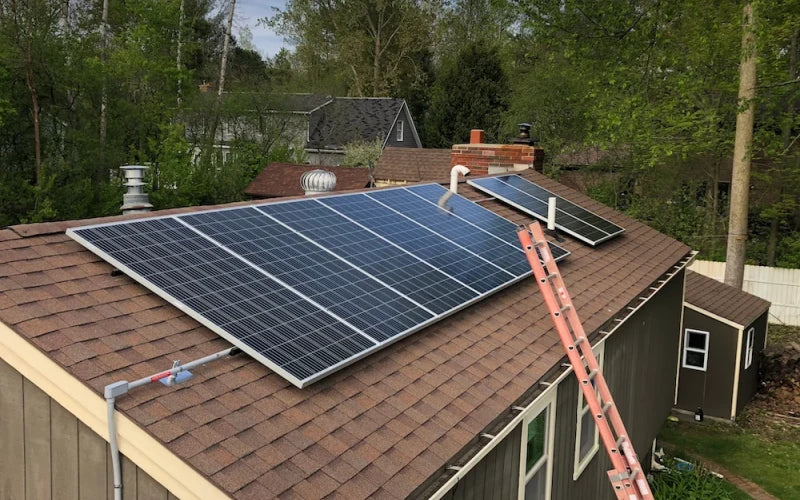
Understanding On-Grid Solar Systems
In the quest for sustainable and renewable energy sources, solar power has emerged as a prominent contender. Among the various solar energy systems available, on-grid solar systems have gained significant popularity. If you're considering investing in solar energy and wondering what an on-grid solar system is all about, this article will provide you with a comprehensive understanding.
What is an On-Grid Solar System?
An on-grid solar system, also known as a grid-tied or grid-connected system, is a solar power setup designed to work in conjunction with the existing electrical grid. Unlike off-grid systems that operate independently, on-grid systems are directly connected to the utility grid. They generate electricity from solar panels, and any excess power produced is fed back into the grid. In return, the grid compensates the system owner through a process known as "net metering."
How Does an On-Grid Solar System Work?
An on-grid solar system comprises several key components: solar panels, an inverter, a bi-directional meter, and the electrical grid. The solar panels, typically installed on rooftops or open spaces, capture sunlight and convert it into DC (direct current) electricity. The inverter then converts this DC electricity into AC (alternating current), making it suitable for use in homes or businesses.
When the solar panels generate more electricity than what is immediately consumed on-site, the excess power is sent back into the grid. This surplus energy is recorded by the bi-directional meter, which measures both the energy imported from the grid and the energy exported from the solar system. As a result, the system owner gets credited for the excess electricity supplied to the grid.
Advantages of On-Grid Solar Systems
1. Cost-Effectiveness:
On-grid solar systems offer a cost-effective solution to harness solar energy. With no need to purchase expensive batteries for energy storage, the overall setup costs are significantly lower than off-grid systems. Additionally, net metering allows users to save on electricity bills by offsetting the energy they consume from the grid with the surplus energy they export.
2. Environmental Benefits:
Embracing solar power through on-grid systems contributes to a greener environment. By relying on renewable energy, we reduce our dependence on fossil fuels, thereby lowering greenhouse gas emissions and combating climate change. Choosing a sustainable energy source like solar power is a step towards a cleaner and healthier planet.
3. Grid Stability and Reliability:
On-grid solar systems play a role in stabilizing the electrical grid. During peak sunshine hours, these systems often produce surplus electricity, which flows back into the grid and supplements power demands. This helps utilities manage fluctuations in energy demand, ensuring a reliable electricity supply for everyone.
4. Government Incentives:
Many governments around the world offer incentives, tax credits, and rebates to encourage the adoption of solar energy systems. These incentives can significantly reduce the initial investment and make on-grid solar systems even more appealing to potential buyers.
Considerations before Investing in an On-Grid Solar System
Before making a decision, there are essential factors to consider to ensure that an on-grid solar system is the right fit for your needs.
1. Location and Sunlight Exposure:
The amount of sunlight your location receives directly impacts the efficiency of your solar panels. Areas with abundant sunlight are more favorable for solar energy generation, but advancements in solar technology have made it possible to harness energy even in less sunny regions.
2. Energy Consumption:
Analyzing your energy consumption patterns will help you determine the size of the solar system you need. Consider your average electricity usage and seasonal variations to accurately size the system to meet your requirements.
3. Available Roof Space:
Solar panels require adequate space for installation. Assess the available roof area and consider any shading issues that might affect the system's performance. If rooftop space is limited, ground-mounted systems could be an alternative.
4. Budget and Payback Period:
Evaluate your budget for the investment in a solar system. While on-grid systems are generally more affordable than off-grid ones, the initial cost can still be significant. However, the long-term savings from reduced electricity bills and potential government incentives can lead to a reasonable payback period.
Conclusion
On-grid solar systems present a practical and environmentally friendly solution for individuals and businesses looking to harness solar energy. By seamlessly integrating with the electrical grid and promoting sustainability, on-grid solar systems empower users to contribute positively to the planet while enjoying potential cost savings. Before making the investment, consider your location, energy needs, and available space to ensure that an on-grid solar system aligns with your objectives. Embrace solar power and be part of the renewable energy revolution - a cleaner and brighter future awaits!

0 comments